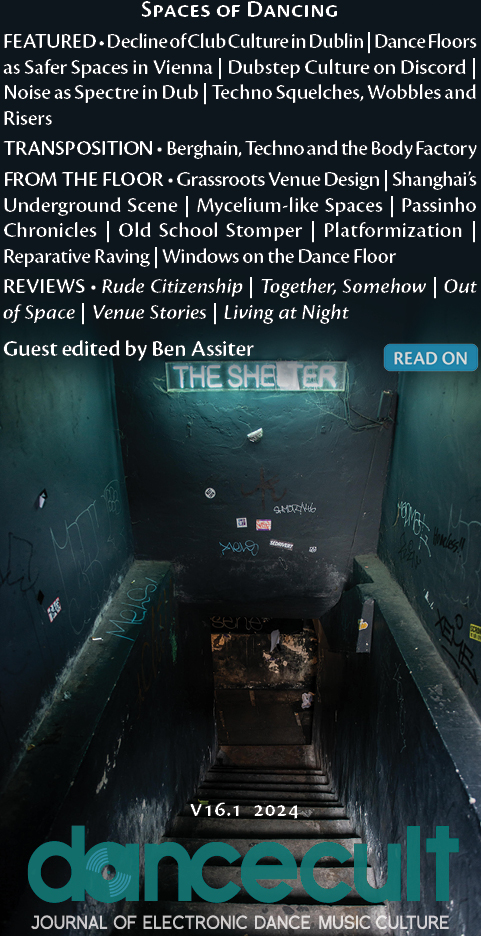Noise as a Spectre in Dub Techno
DOI:
https://doi.org/10.12801/1947-5403.2024.16.01.05Abstract
This article explores dub techno's history and sonic characteristics, focusing on the role of noise as a critical stylistic element. It introduces hauntology as a hermeneutic framework to understand the intricate function of noise within the genre. This interpretive paradigm elevates noise beyond mere auditory embellishments, imbuing it with significant philosophical resonance. The article presents a chronological exegesis of dub techno's evolution and positions it as a conduit for philosophical contemplation. It highlights the enigmatic aesthetic essence of noise, urging readers to reevaluate its role in dub techno and electronic dance music. The objective is to offer insights and promote understanding, encouraging readers to engage with noise as a key component of philosophical and aesthetic discourse in dub techno.
Downloads
Published
Issue
Section
License
Authors who publish with this journal agree to the following terms:- Authors retain copyright and grant the journal right of first publication with the work simultaneously licensed under a Creative Commons Attribution-Noncommercial-Share Alike License that allows others to share the work with an acknowledgement of the work's authorship and initial publication in this journal.
- Authors are able to enter into separate, additional contractual arrangements for the non-exclusive distribution of the journal's published version of the work (e.g. post it to an institutional repository or publish it in a book), with an acknowledgement of its initial publication in this journal. Such derivate works or subsequent publications must happen no less than one calendar year after the initial publication date in Dancecult.
- Authors are permitted and encouraged to post their work online (e.g. in institutional repositories or on their website) prior to and during the submission process, as it can lead to productive exchanges, as well as earlier and greater citation of published work (See The Effect of Open Access).






